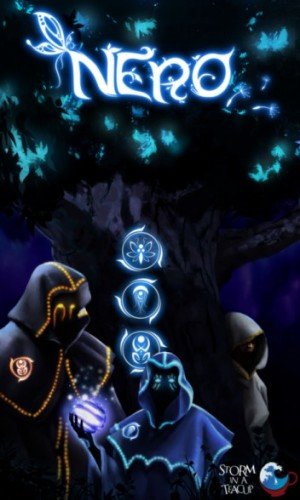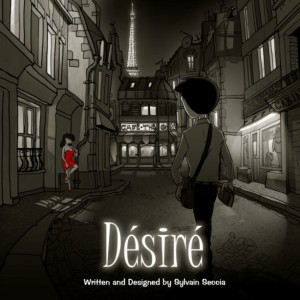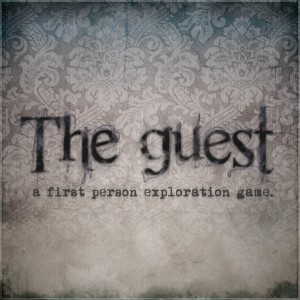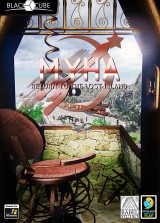Review for Bear With Me page 2
Episode Two
Ah, Paper City. A city of dark deeds and even darker appetites. A city that never sleep– oh wait, that’s a different city. Paper City is the one that Amber Ashworth, the intrepid 10-year-old ingénue, and Ted. E Bear, the hard-nosed private investigator, are back and ready to scour in Episode Two to find Amber’s missing brother. With more places to explore and a larger, crazier cast to interact with, this second outing of Bear With Me has all the witty and entertaining banter you can handle. While it still falls a bit short on actual story and character development, there’s a lot to enjoy in this chapter.
Amber and Ted remain on the lookout for Amber’s brother Flint, but this time around they’ve moved into much bigger and more dangerous environs. Your first forays lead you to the ‘50s-style restaurant, Shell’s Bay Diner, where the world-weary Betty slings coffee all day. She’s not afraid to trade barbs with Ted: “I couldn’t hear you over the sound of you being so short.” A small crack in her face is a great artistic detail, a nod to her jaded experience but also a wink at the fact that she’s a living doll. Meeting Betty at the diner is just the start of a series of character and scene introductions as Amber and Ted slowly try to piece clues together.
From the first episode, we already knew that the steel mill was mysteriously burned down. While it doesn’t seem to have an immediate tie to finding Flint, it’s one of the only hints Amber and Ted have about the nefarious goings-on. Investigating the arson leads the protagonists further away from their search for Flint and deeper into a city rife with dark political alliances, literal card sharks, and even a smattering of voodoo.
While the variety of characters you meet is entertaining, I felt at times that I was thrown into the middle of multiple stories that didn’t always make sense. Sometimes characters are introduced with no real context, leaving you guessing about who they are, like the costumed Batman-wannabe CBG. I still don’t really know too much about the character or even what CBG stands for. I did learn that he’s obsessed with seagulls for some strange reason, and he appears to be wearing a straitjacket. I’m guessing maybe the “C” stands for crazy, but that’s never really confirmed. He’s involved in a darker turn that occurs later in the game, but with better character development that scene could have had much more meaning and depth. I’d also run into characters that seemed to exist only to provide an opportunity for a fun puzzle. For example, outside the diner you’ll encounter Clark, a cloaked figure that you meet fishing...in the dark. He’s most definitely not stalking Betty, no sir. Well, actually he is, but other than that, you don’t really discover why else you’re interacting with him, aside from the fact that he’ll help you to advance the plot.
This lack of context and background extends to a number of throwaway characters you encounter. From Brian Burke (or is that Stevie Walker, a confusion by the two main characters that had me scratching my own head in confusion), the man guarding the front of the burned-out mill; to Doris, the ditsy hippo cashier at a glittering casino; to Pete the drunkard slumped over in a booth at the diner, the supporting cast is an almost literal zoo thrown into the story with no real heft or weight to them – particularly the many characters you can click on at the casino that provide you with names like Percival Pig but will never interact with you.
Fortunately, the game does succeed with several other characterizations, including Amber and Ted, who are quick-witted and whip verbal slingers at each other throughout. Amber sounds as if she’s always on the verge of a smile. Her voice acting is appropriately optimistic and energetic, as befits a precocious 10-year-old. Ted sounds as if he’s eager to finish the conversation so he can sneak a couple of nips from a booze flask, though there are times when Ted is a bit too cynical and can have some rather stiff line readings.
One of my favorite characters is Reef King, the card shark – or rather, the town’s casino kingpin. He’s chomping on a cigar with his sharp teeth and wears a stylish scarf with clubs, hearts, spades, and diamonds on them. He’s surrounded by broad-shouldered gorilla goons, with tight t-shirts that say “I love you,” and “I’m your friend.” Reef King’s dark, deep gravelly voice is menacing, but also has a hint of pathos. Surprisingly, one of the more sympathetic characters is a sentient database log machine who, it turns out, is just really lonely and wants to be your pal. And I haven’t even touched on the nervous Mayor Mills locking himself away in his pig mansion or the mysterious Tigren Jones, a love interest who uses her dark magic to great effect when she’s crossed.
Many of the important characters engage with the protagonists in rapid-fire dialogue. Snappy bon-mots drop from them like bullet casings spraying from a Tommy gun. So much of the dialogue is chock full of pop cultural references, like lyrics from Shaft (“Who’s the cat that won’t cop out.”) Or, out of nowhere, Amber will break into a rendition of Salt-N-Pepa’s “Push It.” The references don’t stop at the dialogue either, appearing in observations as well, such as a blink-and-you’ll-miss-it reference to Blade Runner in the piles of objects you can click on. Puns abound too: when Ted makes an observation about Westpaw casino, he notes: “Something was fishy about this, and it wasn’t the shark.” Given the large volume of jokes, there are some groaners, including a tasteless Anne Frank joke. And there are many, many fourth wall-breaking jokes. In one scene, Amber and Ted meet a dumb but erstwhile bouncer. “But you have to let us in to advance the plot,” Amber says. “Fourth wall jokes don’t work on me,” the bouncer says.
Despite the vast array of characters, you’ll still only ever play as the main two, with one surprising, very small exception in the middle of the story. You’ll switch between Amber and Ted periodically, though these changes happen automatically. At scripted times, Ted will perform an action and at others Amber will, but they both share the same inventory bag, whose icon lights up red whenever you pick up something new.
This episode is much bigger than the first, with many more places to visit like a casino, the burned-down mill, a mansion, a dock area, and more. Thankfully, there is a map accessible via a lovely retro postcard with a full view of Paper City under the moonlight that will allow you to quick-travel to areas currently available to you. One thing the map won’t help you with, though, is the travel time within a scene. Every time Amber or Ted walks to pick something up or observe something, it takes eons for them to complete their trek. And they never look at something from across a room; they always have to walk right up to the item. Every. Single. Time.
Hotspots throughout are context-dependent. The protagonists will make observations about things and people, talk to others, or pick up and interact with items. You’ll have plenty to interact with – but also, less. Let me explain. In the previous episode, you could interact with lots of items in each scene, and the observations were often unique, clever, and funny. This time around, there are fewer interactions per screen, it seems, though there are many more scenes to explore. Unfortunately, many of the things you can interact with for observations seem to be boxes, empty boxes, and even more empty boxes (or debris, more debris, and still more debris) – in other words, useless. This was a funny running gag that appeared infrequently in the first game, but this time around the ratio between pointless, redundant observations and entertaining ones is a bit askew. And you can’t let multiple instances of non-useful items deter you from scouring the lot, as one very “specific” such object may be needed.
Most of the puzzles are straightforward inventory obstacles, and making progress often involves getting the right objects into the hands of the right people. There are some broader overarching puzzles, like a fun fetch quest where you’ll try to find objects matching obscure (but not too obscure) descriptions in order to gain entrance to an area. One of the more interesting tasks comes from an interaction with the sentient database machine. The machine asks you a series of questions that will test your general trivia knowledge but also your knowledge of what’s happened so far in the game. It’s a fun puzzle, even if I didn’t get the number of answers I needed right on the first try. If you do fail, you’ll get multiple chances to try again.
For me, though, the puzzles were definitely not the center of my attention. The ambiance, look, sound, and dialogue are what really make this installment an entertaining experience once again. From the opening’s child-like tune, scratchy and slightly off key, to the light jazz and tsk tsk of hi-hat cymbals throughout, the music is a joy. The game surrounds you with nice ambient sounds as well, like rain tapping on windows and the metallic kaching and plink of slot machines in a casino parlor.
All of these sounds accompany the same black and white cartoon art style as the first episode. Sometimes splotches of color make their way in, like petals floating across the screen. Red seems to be the only additional color, with outlines appearing around relics as you place them in a puzzle or as strings tying together snapshots that appear in the chapter interstices. Given the variety of scenes you’ll explore, a bit more color would have been welcome. As it is, the monochromatic screens show some hints of interesting chiaroscuro artwork (a brilliant bright moon peeking over a dark hulking mansion here or a bright neon sign hanging over a club entrance there), but could have used more since so many scenes have a fairly muted and monotonous look overall. Still, there are many nice animations like flies lazing around trash, rain streaming down windows, twinkling lights around the 24-hour neon diner sign, and Betty slowly chewing gum and blowing bubbles.
These locales are often filled with humorous visual details too, like when you get to explore Mayor Mills’ awesome mansion. In an odd bit of self-referential decorating, the pig mayor uses pigs in his decor everywhere. No, really, everywhere. There’s a pig vase by a painting painted by Pigelangelo; you walk up stairs with pig bannisters; and the mayor sits next to a pig sculpture in his office, lest you forget his decorating aesthetic. Then there’s the Westpaw, populated with jazzy zebras and dapper elephants. You’ll also visit a voodoo hideaway filled with melting candles and spooky knickknacks, a locked boiler room, security room, and hotel hallways – it’s really a large expansion over the areas available in the series debut.
Ah, Paper City. It’s a nicely realized metropolis with gambling joints and seedy dockyards and rundown restaurants. It’s no paper-thin city though, as it’s filled with crazy, interesting characters as well. Bear With Me’s exploration of place and characters were the highlights of this second episode for me. I found the inventory puzzling and threadbare (threadbear?) story, about the city’s upcoming elections and how political machinations are turning things topsy-turvy, were really secondary over the course of three hours. As was the search for Flint, which has still progressed no further than it did in the first episode. Though I’m not any closer to knowing more about the red man, who burned down the mill and why, or where Amber’s brother might be, there is a moment of parting at the end that came as a surprise to me and left the game on quite the cliffhanger. If the next episode is as full of exploration and entertaining characters and dialogue as this one, I’m more than ready to investigate the further adventures of Amber and Ted.
Continued on the next page...























